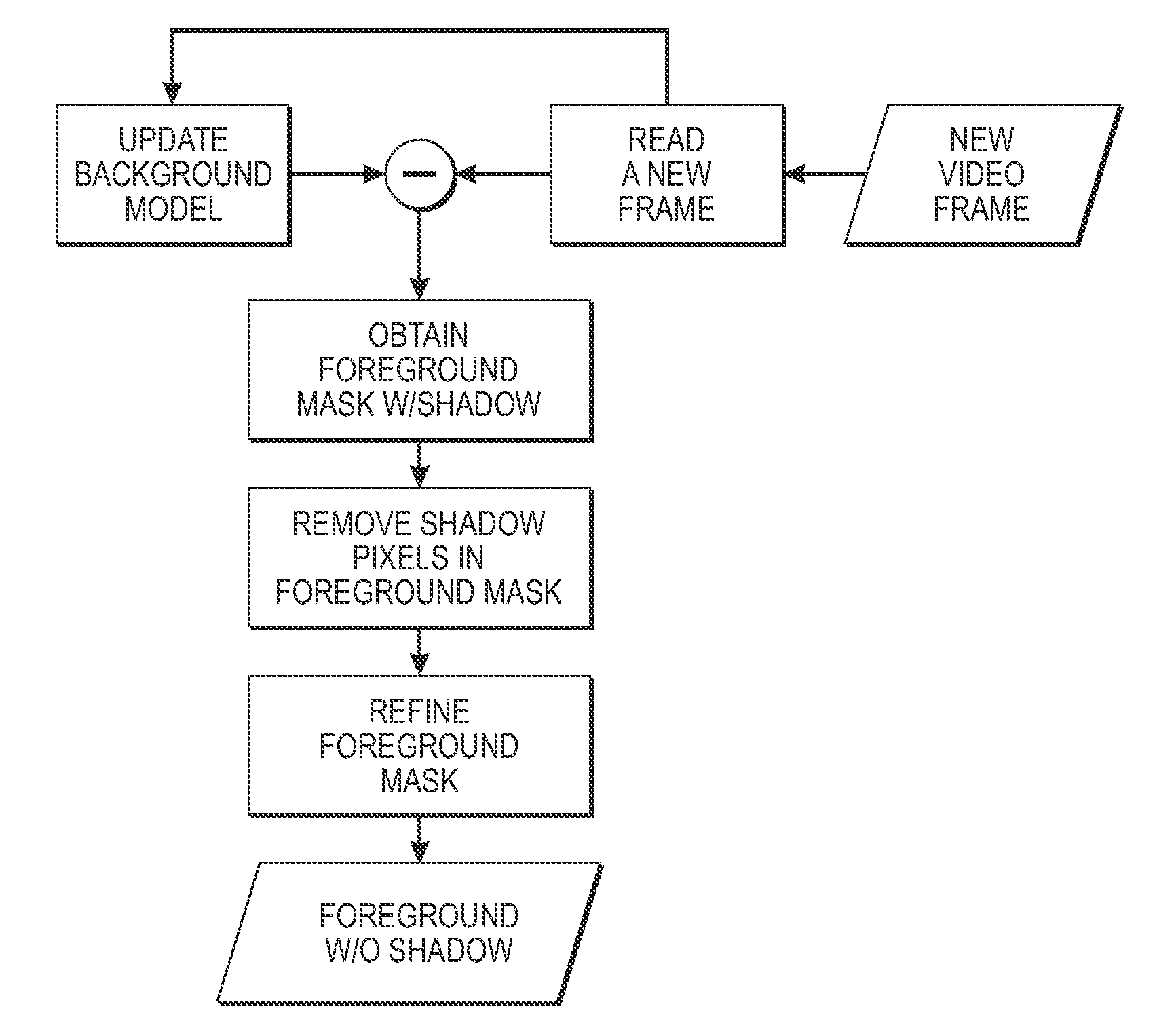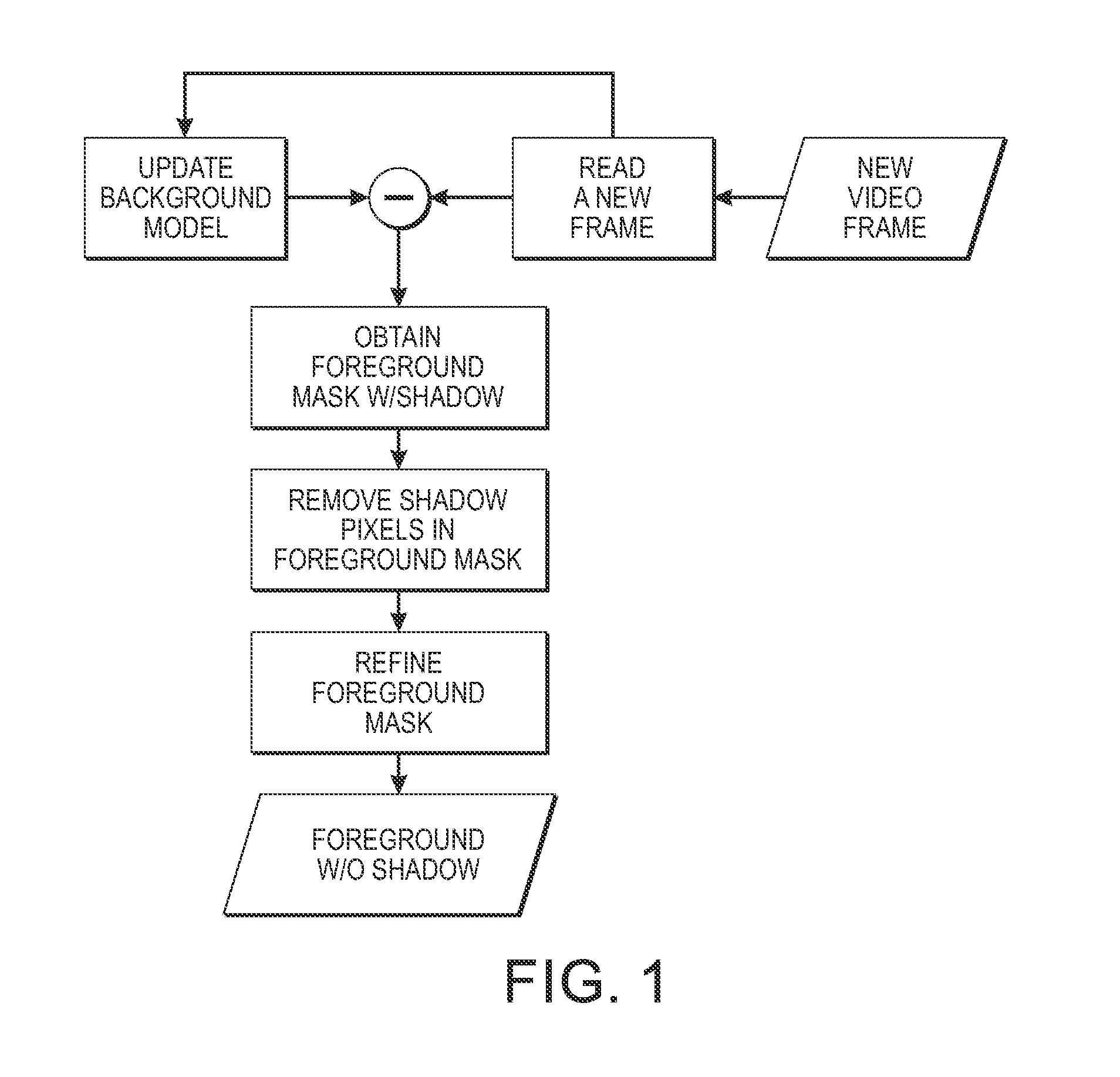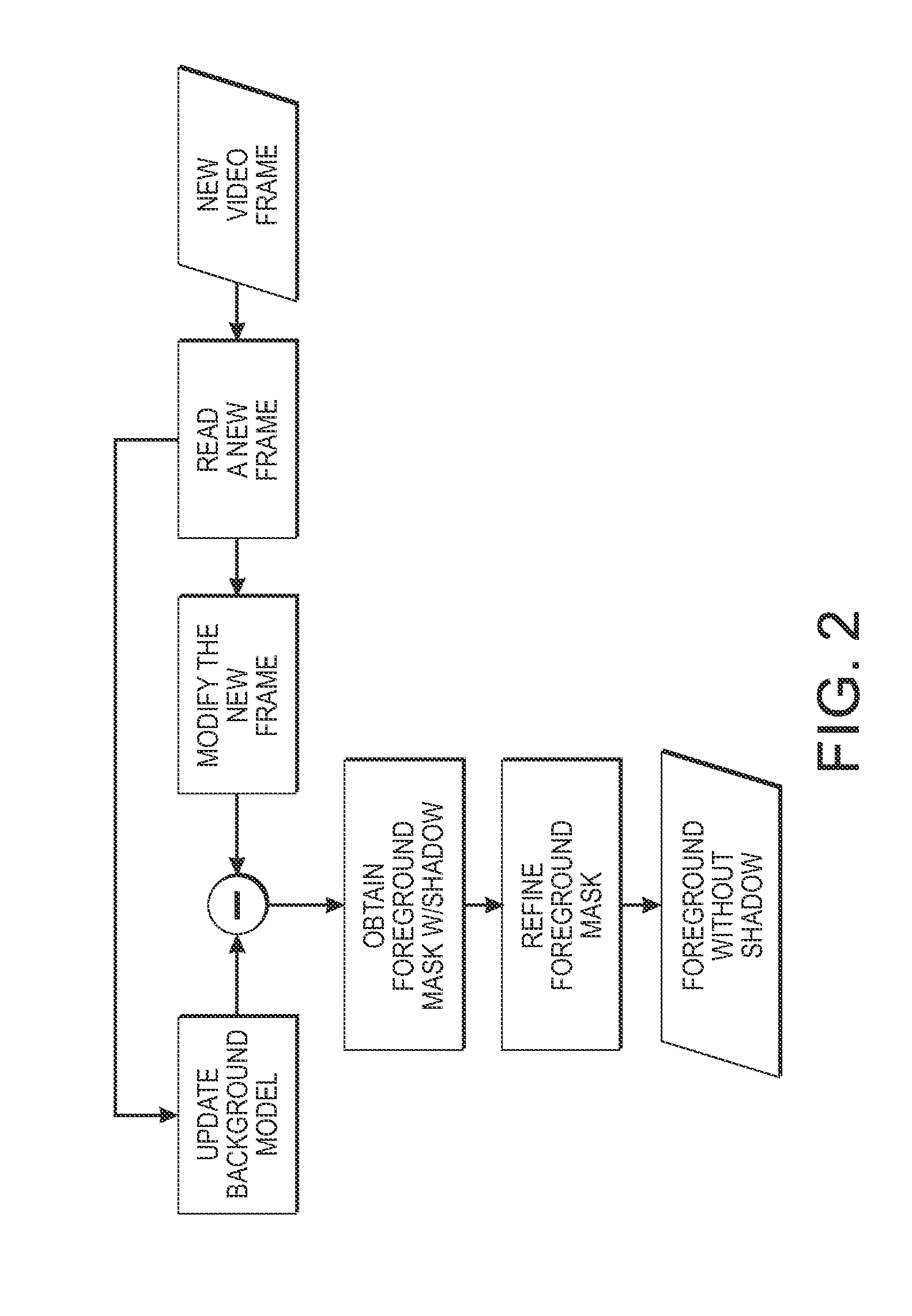Method and apparatus for processing image of scene of interest
a technology of scene and processing method, applied in the field of target image processing, can solve the problems of limiting assumptions, affecting the broad deployment of the technology, and increasing computational complexity, and shadows can pose serious challenges
- Summary
- Abstract
- Description
- Claims
- Application Information
AI Technical Summary
Benefits of technology
Problems solved by technology
Method used
Image
Examples
Embodiment Construction
[0041]The various embodiments disclosed herein generally relate to processing a target image using a background model corresponding to the scene depicted by the target image. The exemplary embodiment finds particular application in identifying shadow portions in the target image. The shadow portions may either be removed from the target image or added to the background model so that comparison of the target image and background model can be used to generate a foreground mask in which the foreground portion of the target image does not include the shadow portion. It is to be appreciated that the exemplary embodiments described herein are also amenable to other applications in which the target image is an individual frame of a sequence of video frames. In video frame embodiments, further consideration of multiple frames can be used to enhance the process and / or to expand the result to a sequence of foreground masks. For example, use of individual or sequences of foreground masks gener...
PUM
 Login to View More
Login to View More Abstract
Description
Claims
Application Information
 Login to View More
Login to View More - R&D
- Intellectual Property
- Life Sciences
- Materials
- Tech Scout
- Unparalleled Data Quality
- Higher Quality Content
- 60% Fewer Hallucinations
Browse by: Latest US Patents, China's latest patents, Technical Efficacy Thesaurus, Application Domain, Technology Topic, Popular Technical Reports.
© 2025 PatSnap. All rights reserved.Legal|Privacy policy|Modern Slavery Act Transparency Statement|Sitemap|About US| Contact US: help@patsnap.com



